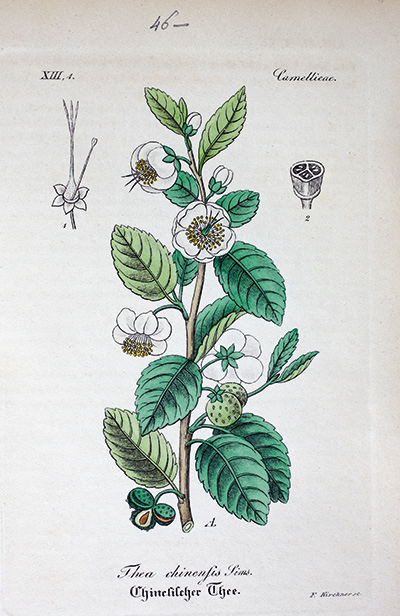Tea benefits
In China, for over 5000 years, the extracts in tea leaves have been used for medicinal purposes. However, it was only in the 6th century that tea became a popular drink and its consumption spread all over Asia. The Japanese Buddhist monks, who had learned to appreciate the beneficial effects of the green tea on their ability to concentrate, began to cultivate the first tea plants in Japan in the 8th century.
The active substances of the tea leaf dissolve very easily and quickly in water, which makes the leaves very suitable for preparation of the beverage via infusion. This is only true for green tea, whose active substances are not changed during the processing methods. In Japanese green tea, the content of the active substances is particularly high, since the leaves are steamed at a very early stage during processing, which conserves the active substances.
Green tea can contain appreciable amounts of vitamin C, in quantities comparable with that found in lemon juice. Since vitamin C is sensitive to heat, it is advisable to prepare the tea with the water at a temperature between 60 and 75°C. Green tea is also a good source of other vitamins: vitamin K is present in large quantities and folic acid to a lesser extent. Since, for the vast majority of the population, folic acid is consumed in low quantities, green tea can be a useful supplement.
The green tea polyphenols (catechins or tannins) are of great importance. These substances produce antioxidant effects and have been linked to cancer prevention. Additionally tea contains the alkaloids caffeine, theobromine and theophylline. These alkaloids are responsible for teas stimulating effect. The joint presence of these stimulants with catechins make tea an easily digestible drink. By contrast, the caffeine in coffee, has chlorogenic acid, which can cause discomfort to the stomach.
Furthermore, green tea is a good source of minerals and also has a significant amount of fluoride. Indeed, the tea plant (Camellia sinensis) has the highest fluoride content of all of the edible plants. The quantities of all these substances varies according to where the tea is planted, as different soils, altitude and climate zone will all have an impact and also according to the type of tea.
However, these active substances should not be considered in isolation. It is the sum of all substances present in green tea that contribute to the beneficial effect on the body.

The Dutch physician Nicolas Diveks (1593 – 1674) praises the virtues of tea with the following words:
“There is nothing that outweighs the tea. Drinking tea gets away all possible diseases of the human being and provides a long life. The tea gives energy and is very useful for those who study or work at night. It is perfectly right to drink twelve cups of tea a day.”
Drinking green tea on a regular basis could prevent a number of diseases, such as:
- High Cholesterol
- Hypertension
- Circulatory disorders
- Osteoporosis
- Lack of concentration
- Depression
- Stomach pains
- Digestive problems
- Dental caries
- Thyroid gland disorders
Also, drinking green tea could contribute to the wellbeing of the body by:
- Combating stress
- Increasing resistance to disease
- Promoting skin regeneration
- Strengthening eyesight
- Stimulating the liver
- Helping the body to rejuvenate
 Português
Português English
English Español
Español